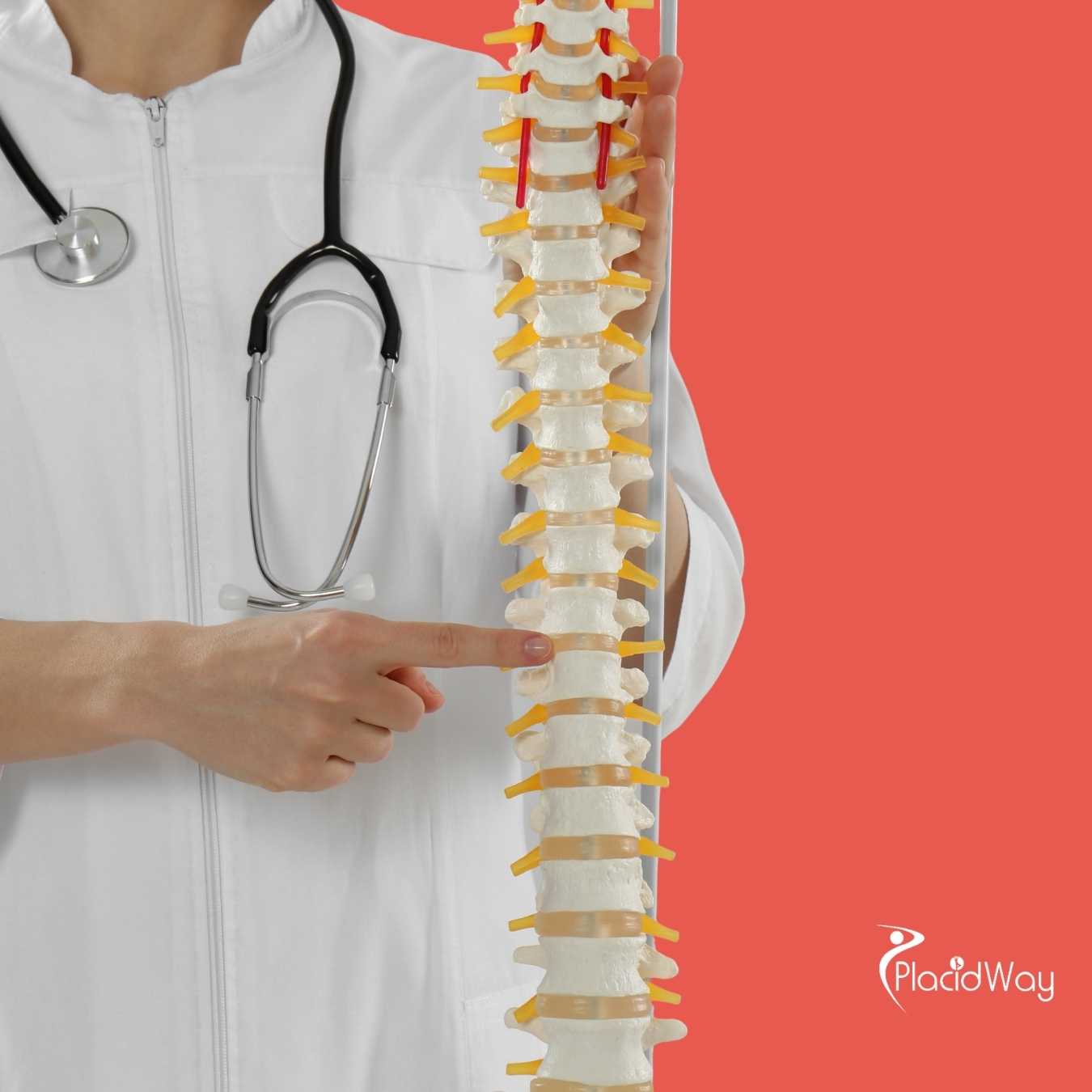Exploring the Best Places in the World for Stem Cell Treatments
.png)
Before diving into the detailed answers, let's explore this complex topic. Finding the "best" country for stem cell treatments isn't as straightforward as identifying a single location. The effectiveness and availability of therapies depend heavily on the specific medical condition, the type of stem cells used, and the regulatory environment of each nation. What might be cutting-edge and legally available in one country could be experimental or even prohibited in another. This global variation means patients often need to carefully research and consider multiple factors beyond just geographical location.
The landscape of regenerative medicine is constantly evolving, with different countries excelling in various aspects, from pioneering research to established clinical applications. Some countries are leaders in academic research and clinical trials, pushing the boundaries of what's possible, while others have developed robust regulatory frameworks that ensure patient safety and treatment efficacy. Additionally, some nations have become popular destinations for medical tourism for stem cells due to more permissive regulations or lower costs for certain therapies. Understanding these nuances is key to making an informed decision about where to seek treatment.
What country has the best stem cell treatments?
Determining the "best" country for stem cell treatments is complex because it varies by disease, research focus, and regulatory approval. For instance, the United States is renowned for its vast number of clinical trials and cutting-edge research, particularly in FDA-approved therapies and novel approaches for serious conditions. However, many therapies remain experimental and are not yet broadly available outside of trials.
Germany is highly respected for its strict regulatory environment and emphasis on evidence-based medicine, offering carefully controlled stem cell therapies. They are known for their strong medical infrastructure and ethical oversight. Similarly, Japan has emerged as a leader in regenerative medicine, especially after relaxing some regulations in 2014, accelerating the development and clinical application of therapies like induced pluripotent stem cells (iPSCs). South Korea also stands out for its advanced biotechnology and clinical research, with a focus on commercializing approved stem cell products.
Beyond these, countries like the Cayman Islands and Mexico have become popular destinations for medical tourism for stem cells due to more permissive regulations, offering a broader range of therapies that might still be considered experimental in other regions. While these clinics can provide accessible options, it's crucial for patients to conduct thorough research into their safety protocols, physician credentials, and the scientific basis of their treatments.
Which countries offer approved stem cell therapies?
When searching for approved stem cell therapies, it's essential to understand that "approved" means the treatment has undergone rigorous testing and meets the regulatory standards of that particular country. In the United States, the FDA has approved stem cell treatments primarily for hematopoietic stem cell transplantation (HSCT) to treat blood cancers and certain immune disorders. There are also a few gene therapies involving stem cells approved for specific genetic diseases.
In the European Union, the European Medicines Agency (EMA) oversees approvals, and member states like Germany and Spain have their own regulatory bodies that approve specific stem cell products. These are often tissue-engineered products or cell therapies for conditions like cartilage repair or severe limb ischemia. Japan's Pharmaceuticals and Medical Devices Agency (PMDA) has also been proactive in approving regenerative medicine products, particularly for conditions that meet unmet medical needs, often with conditional or time-limited approvals to accelerate access.
Australia and South Korea also have established frameworks for approving specific stem cell therapies, with a focus on safety and efficacy. It's crucial for patients to differentiate between these officially approved treatments and experimental therapies that may be offered in other contexts, often with less oversight.
What factors should I consider when choosing a country for stem cell therapy?
Choosing the right country for stem cell therapy requires careful consideration of several crucial factors to ensure safety and potential effectiveness. Firstly, regulatory oversight is paramount. Understand the legal framework governing stem cell research and treatments in the prospective country. Are the therapies fully approved, or are they offered under experimental protocols? Countries with robust regulatory bodies often provide a higher degree of patient protection.
Secondly, investigate the clinic's reputation and the physician's expertise. Look for clinics that are accredited by recognized international or national bodies. Research the medical professionals who will be performing the treatment – their qualifications, experience with stem cell therapies, and any specialized training they possess. Transparent communication about expected outcomes, potential risks, and the scientific evidence supporting their treatments is a positive indicator.
Other important considerations include:
- Treatment Type: Ensure the clinic offers the specific type of stem cell therapy relevant to your condition, whether it's autologous (from your own body) or allogeneic (from a donor).
- Cost and Transparency: Obtain a clear, itemized breakdown of all costs involved, including consultation, treatment, hospitalization, and follow-up care. Be wary of clinics that provide vague pricing.
- Patient Safety Protocols: Inquire about infection control, emergency preparedness, and the handling and processing of stem cells.
- Post-treatment Care and Follow-up: Understand what kind of support and monitoring will be provided after the treatment, especially if you are traveling internationally.
Are stem cell treatments legal in all countries?
The legal landscape surrounding stem cell treatments is diverse and complex, with no global consensus. Many countries, including the United States, have stringent regulations, primarily through agencies like the FDA, which classifies most stem cell products as drugs requiring extensive clinical trials for approval. This means that while research flourishes, only a limited number of therapies are fully approved for widespread clinical use.
Conversely, some countries have adopted more liberal policies, either for research purposes or for commercial therapies. For example, some nations in the Caribbean and South America may offer a wider array of treatments that are not yet approved elsewhere, operating under different regulatory standards. While this can provide access to treatments for patients who have exhausted options at home, it also necessitates a higher degree of caution and due diligence to ensure patient safety and ethical practices.
It's crucial for anyone considering stem cell therapy abroad to thoroughly investigate the specific laws and regulations of the destination country, the scientific validity of the treatment being offered, and the credentials of the clinic and medical professionals involved. Unregulated or unproven treatments carry inherent risks and may not deliver the promised benefits.
What is the average cost of stem cell treatments globally?
The price of stem cell treatments is highly variable and influenced by numerous factors, making it challenging to pinpoint a single "average cost." Generally, treatments for orthopedic conditions like knee pain, using autologous (patient's own) cells, might fall into the lower end of the spectrum, possibly ranging from $5,000 to $15,000 per treatment session. More complex conditions, or those requiring allogeneic (donor) cells and multiple rounds of intravenous or targeted injections, can significantly increase the total expense.
Here's a general overview of cost factors:
- Type of Stem Cells: Adipose-derived (fat-derived), bone marrow-derived, or umbilical cord-derived stem cells can have different processing costs.
- Condition Being Treated: Chronic degenerative diseases or neurological conditions often require more intensive and costly protocols.
- Number of Treatments: Some conditions may require multiple injections or sessions over time.
- Clinic Location and Reputation: Prestigious clinics in countries with advanced medical infrastructure typically charge more.
- Inclusions: The cost may or may not include consultation fees, diagnostic tests, anesthesia, hospitalization, and follow-up care.
For example, a basic **stem cell treatment** for a joint in Mexico might cost around $7,000-$10,000, while a comprehensive treatment for an autoimmune disease in Germany or the US could easily exceed $30,000 to $50,000 or even higher if it involves extensive hospitalization and post-treatment monitoring. Patients should always seek a detailed breakdown of costs before committing to any treatment.
Which countries are known for stem cell research and innovation?
Global leadership in stem cell research and innovation is concentrated in several key regions. The United States consistently leads in scientific publications, patents, and the number of ongoing clinical trials related to stem cells. Major research institutions and pharmaceutical companies in the US are heavily invested in discovering new therapeutic applications and refining existing ones, particularly in areas like cancer treatment, neurological disorders, and genetic diseases.
Japan has made groundbreaking contributions, most notably with the discovery of induced pluripotent stem cells (iPSCs) by Professor Shinya Yamanaka, which earned him a Nobel Prize. This breakthrough has positioned Japan at the forefront of iPSC research and its application in regenerative medicine. Their proactive regulatory approach has also allowed for faster clinical translation of promising therapies.
Germany, with its strong biomedical research infrastructure, contributes significantly to understanding stem cell biology and developing cell-based therapies under stringent ethical and quality standards. South Korea is another powerhouse, known for its rapid advancements in biotechnology and stem cell research, particularly in developing commercial stem cell products and therapies for conditions like spinal cord injuries and heart disease. The United Kingdom also maintains a robust research ecosystem, focusing on ethical considerations, stem cell banking, and understanding fundamental stem cell mechanisms.
Is medical tourism for stem cells safe?
The safety of medical tourism for stem cells is a critical concern for many patients. When chosen carefully, selecting a reputable clinic in a country with established medical standards can be a safe and effective option. This involves extensive research into the clinic's accreditations (e.g., Joint Commission International - JCI), the qualifications of the treating physicians, and verifiable patient outcomes. Reputable clinics will operate with transparency, provide clear information about the scientific basis of their treatments, and adhere to strict safety protocols.
However, the landscape also includes clinics that operate with less oversight, offering unproven or experimental treatments that lack rigorous scientific validation. These "stem cell tourism" clinics often make exaggerated claims, provide treatments without adequate patient screening, and may not follow proper sterile procedures, leading to potential risks such as infection, tumor formation, immune reactions, or even worsening of the underlying condition. Patients must be vigilant and question any promises that seem too good to be true.
To mitigate risks, always seek a second opinion, verify physician credentials, inquire about the origin and processing of stem cells, and understand the regulatory status of the therapy in the country where it is offered. Prioritize clinics that operate with ethical transparency and have a track record of patient safety, not just anecdotal success stories.
What are the common conditions treated with stem cells abroad?
Many patients seek stem cell treatments abroad for a variety of conditions, often when conventional therapies have failed or are limited. One of the most common areas is orthopedics, where stem cells are used for joint pain, osteoarthritis, cartilage repair, and soft tissue injuries. Clinics in places like Mexico, the Cayman Islands, and Costa Rica frequently offer treatments for these musculoskeletal issues, often using mesenchymal stem cells (MSCs) derived from adipose tissue or bone marrow.
Autoimmune diseases represent another significant category. Patients with conditions such as multiple sclerosis (MS), rheumatoid arthritis, Crohn's disease, and lupus often travel for stem cell therapies, particularly hematopoietic stem cell transplantation (HSCT) or MSC infusions, which aim to modulate the immune system. While some of these therapies are approved in certain countries, many remain experimental, especially for specific autoimmune indications.
Furthermore, neurological conditions like Parkinson's disease, Alzheimer's disease, cerebral palsy, and stroke recovery are also targets for stem cell interventions. The goal is often to promote neuroprotection, stimulate regeneration, or reduce inflammation. Other areas include chronic obstructive pulmonary disease (COPD), diabetes complications, and certain cardiac conditions. It's important to note that the efficacy and long-term safety for many of these applications are still under investigation, and patients should be fully aware of the scientific evidence behind the treatments offered.
How do I find a reputable stem cell clinic abroad for knee osteoarthritis?
Finding a reputable stem cell clinic abroad for knee osteoarthritis requires diligent research to ensure you receive safe and effective care. Start by looking for clinics that specialize in orthopedic regenerative medicine and have a strong track record. Verify that the medical staff, especially the surgeons or specialists performing the procedure, are board-certified and have extensive experience specifically with stem cell applications for knee conditions.
Key steps to finding a trustworthy clinic:
- Accreditation: Prioritize clinics with international accreditations like Joint Commission International (JCI) or similar national health ministry certifications, which signify high standards of patient care and safety.
- Transparency in Treatment: The clinic should clearly explain the type of stem cells used (e.g., autologous bone marrow aspirate concentrate, adipose-derived stem cells), the preparation method, and the specific injection protocol. Ask about the scientific evidence or clinical trials supporting their approach for knee osteoarthritis.
- Patient Testimonials and Outcomes: While anecdotal evidence should be balanced with scientific data, look for consistent positive patient reviews and, if available, objective outcome data published by the clinic.
- Comprehensive Consultation: A reputable clinic will conduct a thorough medical evaluation, including imaging (X-rays, MRI), to determine if you are a suitable candidate and discuss realistic expectations.
- Post-Treatment Plan: Ensure there is a clear plan for post-procedure care, rehabilitation, and follow-up, even after you return home.
Be wary of clinics that promise guaranteed cures, offer vague treatment details, or pressures you into making a quick decision. A transparent and ethical clinic will prioritize patient education and safety.
What should I ask a stem cell clinic before traveling for treatment for multiple sclerosis?
When considering stem cell treatment for multiple sclerosis (MS) abroad, asking the right questions is crucial for your safety and to manage expectations. MS is a complex neurological condition, and not all stem cell therapies are proven or suitable. Here are key questions to pose to any prospective clinic:
- Specific Cell Types and Source: What type of stem cells will be used (e.g., hematopoietic stem cells, mesenchymal stem cells) and where do they originate (autologous, allogeneic, umbilical cord)? How are these cells processed and prepared?
- Regulatory Status for MS: Is this specific therapy approved for MS in the country where it's being offered? If not, is it part of a registered clinical trial, and what are the trial details?
- Scientific Evidence and Outcomes: Can the clinic provide peer-reviewed scientific publications or data supporting the efficacy and safety of their specific treatment protocol for MS? What are their reported patient outcomes for MS, and how are these measured?
- Potential Risks and Side Effects: What are the short-term and long-term risks associated with the procedure, including infection, immune reactions, or exacerbation of MS symptoms?
- Patient Eligibility Criteria: What are the exact criteria for patient selection for MS treatment? Will I undergo a thorough neurological evaluation before treatment?
- Treatment Protocol and Duration: What does the entire treatment protocol entail (number of infusions, duration of stay)? What are the expected timeline and phases of recovery?
- Cost and Inclusions: Obtain a comprehensive breakdown of all costs, including the treatment itself, diagnostics, medication, hospitalization, and follow-up care.
- Post-Treatment Care and Follow-up: What kind of follow-up care, monitoring, and rehabilitation support is provided after the treatment, especially after I return home?
- Emergency Preparedness: What protocols are in place for medical emergencies during or after the procedure?
Ensure the clinic provides clear, evidence-based answers to all your questions. Be wary of clinics that make vague promises, discourage questions, or claim to cure MS without substantial scientific backing.
Considering stem cell treatments or other advanced medical solutions? Explore PlacidWay's extensive network of international clinics and medical tourism options to find trusted providers and personalized care plans.


.png)









Share this listing